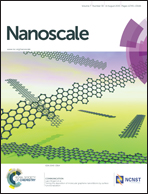Characterizing the biocompatibility and tumor-imaging capability of Cu2S nanocrystals in vivo
Abstract
Multifunctional nanomaterial-based probes have had key impacts on high-resolution and high-sensitivity bioimaging and therapeutics. Typically, NIR-absorbing metal sulfide-based nanocrystals (NCs) are highly assuring due to their unique optical properties. Yet, their in vivo behavior remains undetermined, which in turn undermines their potential bioapplications. Herein, we have examined the application of PEGylated Cu2S NCs as tumor contrast optical nanoprobes as well as investigated the short- and long-term in vivo compatibility focusing on anti-oxidant defense mechanism, genetic material, immune system, and vital organs. The studies revealed an overall safe profile of the NCs with no apparent toxicity even at longer exposure periods. The acquired observations culminate into a set of primary safety data of this nanomaterial and the use of PEGylated Cu2S NCs as promising optical nanoprobes with immense futuristic bioapplications.


 Please wait while we load your content...
Please wait while we load your content...